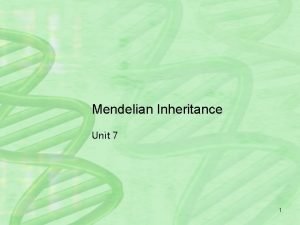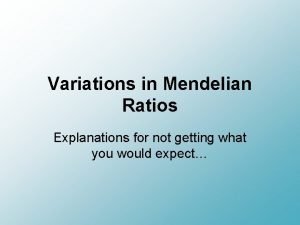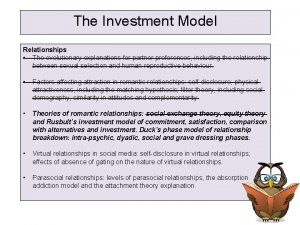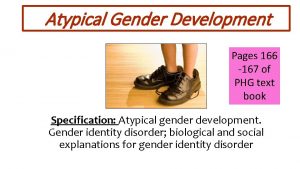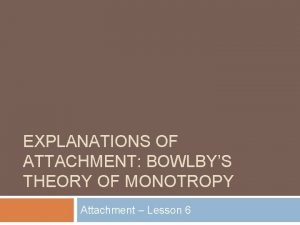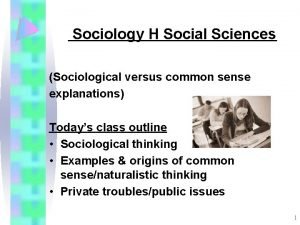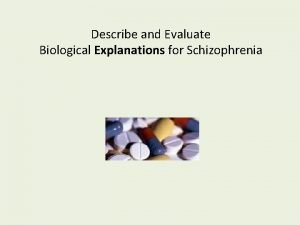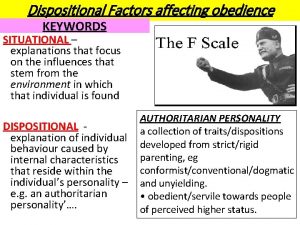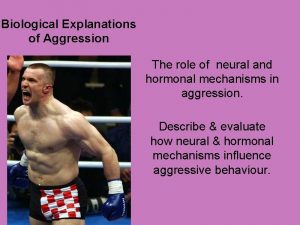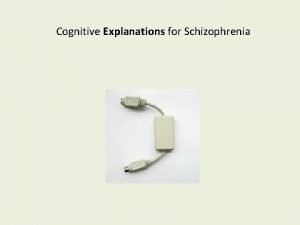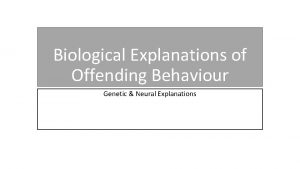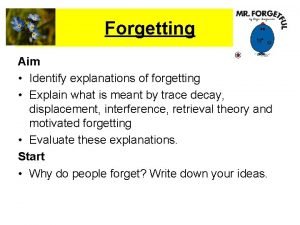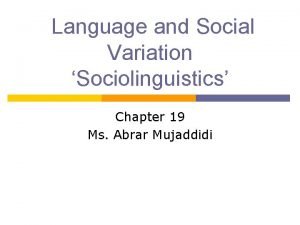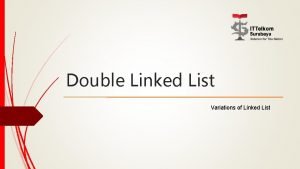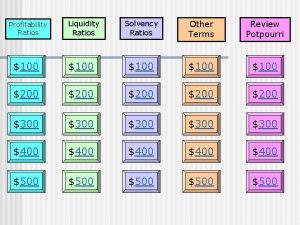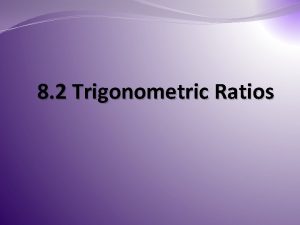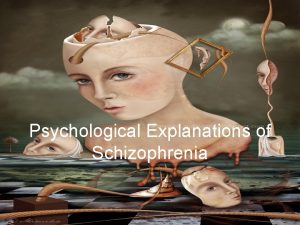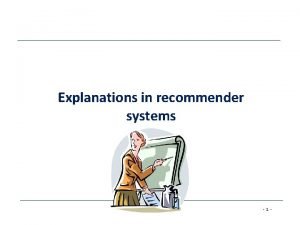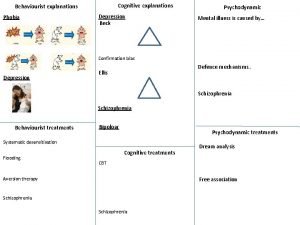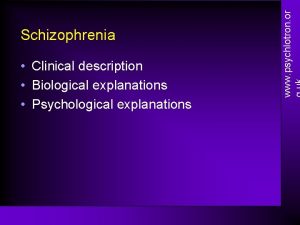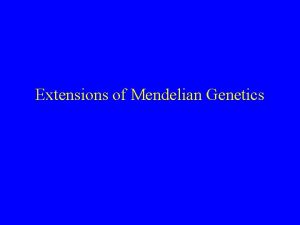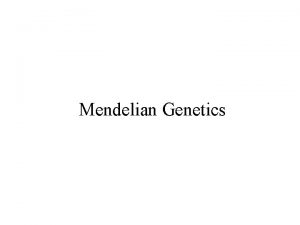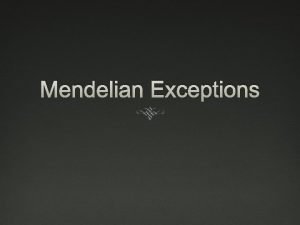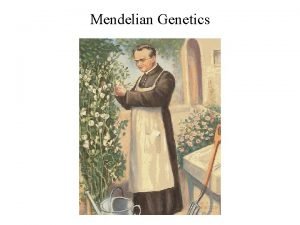Variations in Mendelian Ratios Explanations for not getting






















- Slides: 22

Variations in Mendelian Ratios Explanations for not getting what you would expect…

Exceptions to Mendel’s Principles • • Linkage Incomplete Dominance Co-Dominance Multiple Alleles Sex-Linked Genes Polygenic Epistasis Pleitropy

Linkage • The characters Mendel examined happened to be on separate chromosomes - that is why he observed independent assortment. • If, however, the genes are on the same chromosomes, they will be inherited together.

Linkage (con’t) • For example, consider the following parental nuclei. Both father and mother have a pair of chromosomes with alleles for two different genes:

Linkage (con’t, still…) • If we look at this with a Punnett square what is going to happen in the next generation:

Linkage (con’t, still…again) • There are fewer genotype combinations than in the usual cross involving two alleles.

Incomplete and Codominance • In incomplete and co-dominance, neither of the two alleles is dominant over the other. • The result is a heterozygote with a different phenotype from the homozygous dominant.

Incomplete Dominance • the effect of the two alleles is blended

Co-Dominance • both alleles are expressed independently and are uniquely recognizable • In white clover, one form of homozygous plant exhibits leaves with a chevron pattern; the alternate homozygous form exhibits leaves with a large light-colored area. • Heterozygous plants exhibit both the chevron and light colored area on their leaves.

Multiple Alleles • Sometimes more than two alleles are present at a locus for a gene. • An example is blood groups in humans.

Multiple Alleles (con’t) • Blood type, for example, is determined by three alleles. – Ia codominant – Ib codominant – i recessive

Bloodtype Alleles Ia Ib i Ia I a. I b I ai Ib I a. I b I bi i I ai I bi ii

Sex-Linked Genes • Alleles for a gene on the X chromosome (but absent on the Y) are said to be sex-linked.

Sex Determination • If two X chromosomes (XX) are present in the embryo, it generally develops into a female. • If one X and Y (XY) are present in the embryo, it generally develops into a male. • Males determine the sex of the offspring as they can create either an X sperm or a Y sperm. • If an X sperm fertilizes an egg, the embryo becomes a female. • Females can only create X eggs.

Back to Sex-Linkage • This means that males may inherit just one allele for a characteristic and that allele will be expressed, whether it is dominate or recessive. • The three genotypes that are present in the female (AA, Aa, aa) are the usual ones. • In males there are two new genotypes (A and a). • Males are said to be hemizygous for sex-linked traits because they only have one X chromosome.

Example Sex-Linkage • Genotypes are expressed with their respective sex chromosome; the Y has no alleles.

Sample Cross (Sex Linkage)

Interactions Between Genes • Independence of gene inheritance does not necessarily mean that genes act independently. • Because genes effect the phenotype via biochemical reactions, their effects depend on the chemical and physical environment created, in part, by other genes. (Understanding this will come later… hopefully!) • Therefore, the phenotypic effect of one gene depends on one or more other genes.

Polygeny • When two or more independent genes have a similar and additive effects on the same characteristic, it is called polygenic inheritance. • Height and skin color in humans, for example, are polygenic.

Epistasis • When the presence of one allele of a gene determines which allele of another gene is expressed. • Coat, eye, and nose color in Labs is a great example

Coat Colour (Phenotype) Allele Genotypes Black B BBEE BBEe Bb. EE Bb. Ee Chocolate b bb. EE bb. Ee Yellow e BBee Bbee bbee • The e allele is epistatic. • When present, it prevents the B or b allele from being expressed and the labs are all yellow.

Pleiotropy • A gene that effects more than one characteristic is pleiotropic. • Sickle Cell is an example.
 Difference between mendelian and non mendelian inheritance
Difference between mendelian and non mendelian inheritance Blood type matrix
Blood type matrix Getting ahead
Getting ahead Phrenology
Phrenology New deal political cartoons and explanations
New deal political cartoons and explanations Evolutionary psychology
Evolutionary psychology Gender dysphoria biological explanations
Gender dysphoria biological explanations Monotropy theory
Monotropy theory Russian revolution political cartoon
Russian revolution political cartoon Examples of common sense and sociological explanations
Examples of common sense and sociological explanations Biological explanations of schizophrenia
Biological explanations of schizophrenia Dispositional vs situational
Dispositional vs situational Epq spec
Epq spec Premise indicators
Premise indicators Biological explanations of aggression
Biological explanations of aggression Cognitive explanations of schizophrenia
Cognitive explanations of schizophrenia Neural explanations of offending behaviour
Neural explanations of offending behaviour Motivational forgetting
Motivational forgetting Sadlier vocabulary workshop level d unit 1
Sadlier vocabulary workshop level d unit 1 What is social variation
What is social variation Spearman two factor theory
Spearman two factor theory Kwhl chart example
Kwhl chart example Variations
Variations
